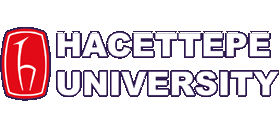| Obligation |
: |
Elective |
| Prerequisite courses |
: |
ELE120 |
| Concurrent courses |
: |
- |
| Delivery modes |
: |
Face-to-Face |
| Learning and teaching strategies |
: |
Lecture, Question and Answer, Problem Solving |
| Course objective |
: |
The course aims at teaching students programming tools, programming structures, models, analysis and applications. |
| Learning outcomes |
: |
Know programming tools and analyses programs. Uses Data Structures in Programming Applications. Implements algorithms in engineering area. Designs algorithms and programs using techniques taught in the class. |
| Course content |
: |
1.Data Structures; Concepts and Review 2. Effective Programming Techniques 3. Stack, Recurson and Queues 4. Searching Algorithms 5. Linked Lists and Applications 6. Sorting Algorithms 7. Tree Structures |
| References |
: |
Ford W., Topp W., Data Structures with C++, Prentice Hall, 1996.; Sedgewick R., Algorithms in C, Addison Wesley, 1990. |
Course Outline Weekly
| Weeks |
Topics |
| 1 |
Data Structures, Intrıduction, Definitions, Concepts |
| 2 |
Stack, Recursion and Queues, Applicatioins |
| 3 |
Queues, Calssification, Types and Applications |
| 4 |
Lists, Linked Lists and Applications |
| 5 |
Searching Algorithms |
| 6 |
Hash Algorithms |
| 7 |
Sorting Algorithms, Simple Algorithms, Algorithm Analysis |
| 8 |
Bubble Sort, Smple Selection Sort and Insertion Sort |
| 9 |
Quick Sort, HeapSort, Merge Sort and Shell Sort Algorithms |
| 10 |
Radix Sort, Bucket Sort and Counting Sort |
| 11 |
Midterm |
| 12 |
Tree, Definition and Applications |
| 13 |
Binary Trees, Analysis and Applications |
| 14 |
AVL Trees, Analysis and Applications |
| 15 |
Preparation for Final exam |
| 16 |
Final Exam |
Matrix Of The Course Learning Outcomes Versus Program Outcomes
| Key learning outcomes |
Contribution level |
| 1 |
2 |
3 |
4 |
5 |
| 1. |
Possesses the theoretical and practical knowledge required in Electrical and Electronics Engineering discipline. | | | | | |
| 2. |
Utilizes his/her theoretical and practical knowledge in the fields of mathematics, science and electrical and electronics engineering towards finding engineering solutions. | | | | | |
| 3. |
Determines and defines a problem in electrical and electronics engineering, then models and solves it by applying the appropriate analytical or numerical methods. | | | | | |
| 4. |
Designs a system under realistic constraints using modern methods and tools. | | | | | |
| 5. |
Designs and performs an experiment, analyzes and interprets the results. | | | | | |
| 6. |
Possesses the necessary qualifications to carry out interdisciplinary work either individually or as a team member. | | | | | |
| 7. |
Accesses information, performs literature search, uses databases and other knowledge sources, follows developments in science and technology. | | | | | |
| 8. |
Performs project planning and time management, plans his/her career development. | | | | | |
| 9. |
Possesses an advanced level of expertise in computer hardware and software, is proficient in using information and communication technologies. | | | | | |
| 10. |
Is competent in oral or written communication; has advanced command of English. | | | | | |
| 11. |
Has an awareness of his/her professional, ethical and social responsibilities. | | | | | |
| 12. |
Has an awareness of the universal impacts and social consequences of engineering solutions and applications; is well-informed about modern-day problems. | | | | | |
| 13. |
Is innovative and inquisitive; has a high level of professional self-esteem. | | | | | |
